Non-Toxic Plug-In Air Fresheners at a Glance:
- Conventional air fresheners often contain potentially toxic chemicals, including allergens, phthalates (which are endocrine disruptors), and BTEX chemicals (which are carcinogenic).
- Eliminating home fragrance products completely is one easy (and free!) way to reduce your exposure to environmental chemicals and improve indoor air quality.
- But if you love your air fresheners and don’t want to give them up, there are a few non-toxic plug-in air fresheners on the market that make it easy to switch to safer scents!
- Some of my favorite brands for non-toxic plug-ins include:
- Other alternatives to plug-ins include:
- See below for more recommendations!
You’ve likely seen those TV commercials in which someone plugs in an air freshener and is magically transported to a field of flowers, a glistening waterfall, or a pine forest—places that are far from the stresses of one’s day. Although these commercials appear to feature nothing more than a soothing fragrance, there’s a lot more to it.
In actuality, traditional plug-in air fresheners are more than just pleasant scents. Underneath the jasmine flowers or lilies lie chemicals you likely can’t pronounce, which can potentially harm human health.
If you want to overhaul your household products, a good place to start is with non-toxic plug-in air fresheners. Making the switch is pretty darn easy (it’s as simple as swapping one plug-in for another!), and it’s something that you can enjoy in your home every day.
Read on to learn more about the harmful ingredients in conventional air fresheners and how you can replace those with ones that are better for you.
Table of Contents: Non-Toxic & Natural Plug-In Air Fresheners
- Are Air Fresheners Bad for You?
- Are Plug-In Air Fresheners Toxic?
- Are Conventional Air Fresheners Toxic to Pets?
- Are There Any Safe & Non-Toxic Plug-In Air Fresheners?
- A Quick Note for Chemically-Sensitive Folks
- 5 of My Favorite Non-Toxic Plug-In Air Freshener Brands
- 5 More Non-Toxic Alternatives to Plug-In Air Fresheners
This guide contains affiliate links, which means we may earn a small commission if you choose to make a purchase.
Are Air Fresheners Bad for You?
The short answer? Air fresheners made with toxic chemicals aren’t exactly the best thing to be inhaling in your home. It’s up to every individual to weigh the risks of anything you bring into your living spaces.
Maybe you can’t part with your fave Summer Rain-scented plug-in, but luckily, plenty of alternatives can be better for your overall health.
Toxins in Air Fresheners
Like many fragranced household and personal care products, companies tend to include chemicals in air fresheners that make the manufacturing process easier and are typically less expensive. Although these chemicals are more convenient, they’re not exactly ideal for people who breathe in the chemicals after using the air fresheners in their homes.
One 2017 study in Building and Environment reported that 20% of the U.S. population has experienced not-so-great health effects from air fresheners.
This study includes acute effects like migraine headaches, asthma attacks, mucosal symptoms, infant illness, and breathing difficulties. It doesn’t take into account the potential long-term downstream effects of regularly inhaling endocrine-disrupting chemicals, such as infertility or even cancer.
Indoor Air Pollution
Many air fresheners and plug-ins (like Wallflowers or Glade) can cause indoor air pollution. Many people don’t know that indoor air pollution can actually be worse than outdoor air pollution! Since, according to the Environmental Protection Agency (EPA), we spend around 90% of our lifetime indoors, indoor air quality is an important aspect of our homes to consider.
Related Articles:
Are Plug-In Air Fresheners Toxic?
According to MADE SAFE®, the organization that has helped America’s first non-toxic product seal, traditional air fresheners can include the following less-than-desirable chemicals:
Benzene: Known for its sweet smell, this chemical comes from crude oil, coal, or natural gas. It is a known carcinogen. If you’re using an aerosol spray, there’s an even higher chance your air freshener may contain benzene. In recent years, lab testing has found benzene contamination in various aerosol spray products, from dry shampoo to deodorant to sunscreen.
Formaldehyde: That same liquid used to preserve animals seen in biology classes makes its way into air fresheners and other household products. Also known for its industrial germicide and fungicide properties, the National Cancer Institute lists it as a carcinogen.
Toluene: A chemical produced during gasoline manufacturing, toluene can be used as a solvent and is frequently found in aviation and automotive fuels. It is also a known carcinogen.
Xylene: This sweet scent naturally occurs in petroleum and coal and can be found in aviation fuel, gasoline, and cigarette smoke. It is often found together with benzene, toluene, and ethylbenzene to group together what’s known as “BTEX” chemicals.
Phthalates: These endocrine-disrupting chemicals are commonly used in air fresheners (as well as other fragranced personal care products like soap and shampoo). In these types of goods, phthalates are used to make fragrances last longer. However, you’ll rarely see phthalates listed on the ingredient label because they’re (legally) hidden under the term “fragrance.” Phthalates can have many serious downstream effects, including fertility problems, developmental/reproductive harm, and cancer.
Other Allergens and Mystery Ingredients: It’s not just phthalates that can be hidden under the “fragrance loophole,” however. Under U.S. law, there are over 3,500 different chemicals that manufacturers can include in their products under the simple word “fragrance” (or “parfum”).
Many of these ingredients are perfectly safe, while others of them including endocrine disruptors (like phthalates, referenced above), carcinogens, and allergens. This makes it practically impossible for consumers to control what they consume.
Other VOCs: People use the acronym “VOC” to refer to “volatile organic compounds.” It’s a blanket term for many different chemicals that can easily vaporize at room temperature, potentially resulting in more air pollution.
It should be noted that almost all air fresheners (even the natural ones) have volatile organic compounds (that’s even how some of them work by releasing VOCs into the air). But some VOCs are safe, while others can be toxic. (Those are the ones most people think of when they hear the term “VOC.”)
One 2011 study in Environmental Health Perspectives tested 25 different home products that included air fresheners and detected an astounding 133 different VOCs. Close to half the products generated at least one of 24 carcinogenic pollutants. You can read more about volatile organic compounds (VOCs) here.
Air Freshener Poisoning Symptoms
Air fresheners can bring about several health concerns, whether inhaled, make contact with the skin, or ingested. These poisoning symptoms can either take place over the long or short term. Some of the more acute symptoms can include:
- Rash and skin irritation
- Allergy symptoms
- Asthma attacks
- Hormone disruption
- Throat irritation
- Stomach upset
- Coughing
- Fatigue
- Vomiting
Are Conventional Air Fresheners Toxic to Pets?
Since these chemicals can be harmful to humans, it should come as no surprise that they can be unsafe for our furry friends, too. In fact, they can be even tougher on their systems since their lungs and other organs are smaller than ours.
Just like us, dogs, cats, and other pets can be susceptible to symptoms like respiratory irritation, lethargy, nausea, and, unfortunately, cancer. There’s also the added concern that your pets may try to ingest the liquid in the plug-in, which could sadly result in poisoning.
Are There Any Safe & Non-Toxic Plug-In Air Fresheners?
The short answer is: yes!
Look beyond traditional store shelves, and you’ll likely find a whole world of natural, safe air fresheners online or in natural foods stores. It’s promising that non-toxic options are also starting to be sold by nationwide retailers as well. Many plug-in air freshener alternatives could also be called “mini plug-in diffusers” that emit essential oils into the air instead of chemicals.
Non-toxic pluggable air fresheners are undoubtedly safer than ones with toxic ingredients, but even natural air and fabric fresheners come with caveats. For example, if you use a new essential oil that you haven’t used previously, you may experience a reaction anyway, if you’re allergic to it.
Also, some essential oils aren’t safe to release into the air if you have a pet (i.e., tea tree is poisonous to pets, even when inhaled in the air).
That’s why it’s smart to do your homework before using an essential oil. Find out which ones are best for pets. The second you start to react to a non-toxic air freshener—look for signs like coughing, irritated eyes, headache, and dizziness—unplug it and get medical attention if needed. Next time, consider trying a different oil.
A Quick Note for Chemically-Sensitive Folks
Although the brands below prioritize safe, transparent ingredients and are free from things like phthalates, those who are extremely sensitive to fragrances, in general, may still find them to be too strong. Ever since I became ill from mold, I have been much more sensitive to fragrances (even non-toxic ones!).
Even though I do use the brands below in my home, fragrances of any kind are still too much for me sometimes, and I have to go completely fragrance-free in my home. I’ve noted which brands offer the ability to customize the strength of the scent!
5 of My Favorite Non-Toxic Plug-In Air Freshener Brands
Okay, now let’s get to it! Here are my favorite options for non-toxic and eco-friendly air fresheners that prioritize transparent ingredients and natural scents:
1. Scent Fill


- Price Range: $5 (one plug-in refill) – $34 (Starter Kit). Save by signing up for a subscription.
- Customizable Scent Strength? Yes
This company crafts scent refills that fit into traditional plug-ins that are on the market (such as AirWick). It’s a great alternative to Glade or Air Wick because it’s affordable and basically works the exact same way. And just like with those two brands, you can customize the amount of scent that’s released by twisting the top of the plug-in.
One thing I really like about ScentFill is that they offer both 100% natural scent options and safe synthetics. So if you want to stick with completely natural ingredients, you have lots to choose from, including lavender, peppermint, vanilla, juniper woods, and many more.
Or if you’re used to the more unique scents like “Pumpkin Pie,” “Blue Lava,” or “Dryer Fresh,” you can get those, too! But even their synthetic blends are phthalate-free, Prop 65 compliant, certified cruelty-free, and made in the USA.
You can even set up a subscription to regularly receive the scent refills and get a discount.
2. Aera
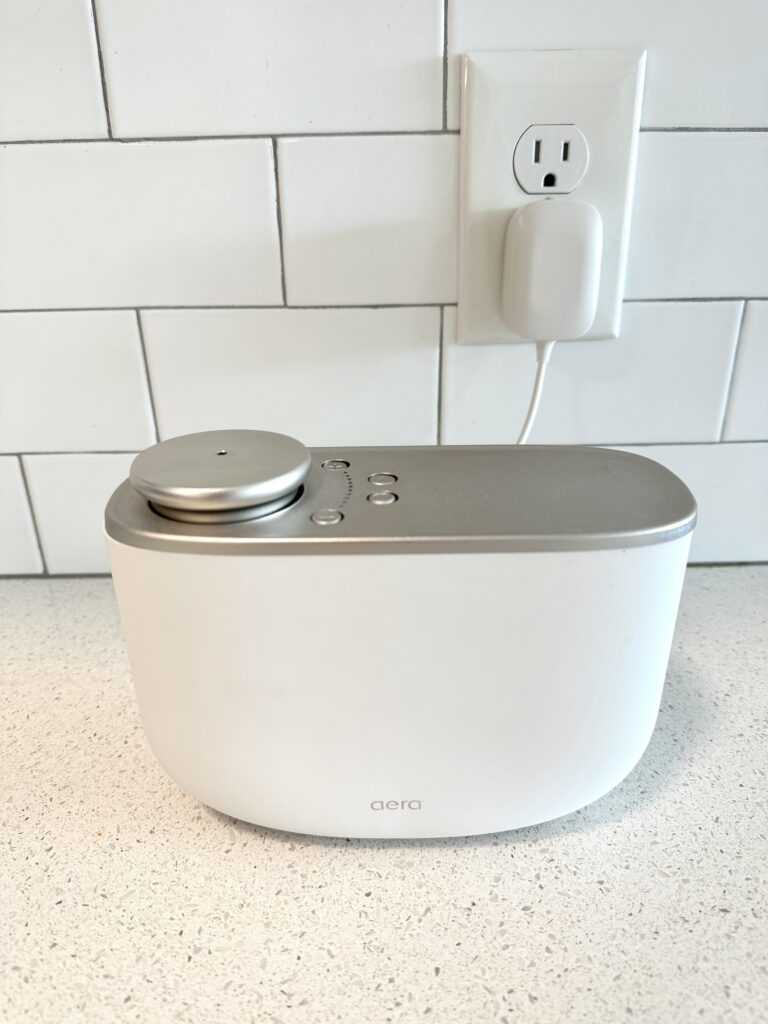

- Price Range: $95 (for the mini-diffuser); $199 (for the regular diffuser); $60-$65 (for the fragrance refills). You can save if you sign up for a subscription.
- Customizable Scent Strength? Yes
Aera is more of a “luxury” plug-in air freshener. It comes in two sizes: their standard Diffuser (which is the one I have, pictured above on the left) and the smaller Mini Diffuser (on the right). Both are technically “plug-in” air fresheners, but the smaller one is more of your classic “Glade” alternative, whereas the larger one has to actually sit on a countertop or other surface.
These are “smart” diffusers that are very customizable. They even come with an app! You can turn the strengths up or down, put them on a schedule, and more.
They have a lot of scents available, and you can sort by type (like citrus, floral, fresh, etc.) or by “mood” (like cozy, refreshed, or energized).
3. Enviroscent
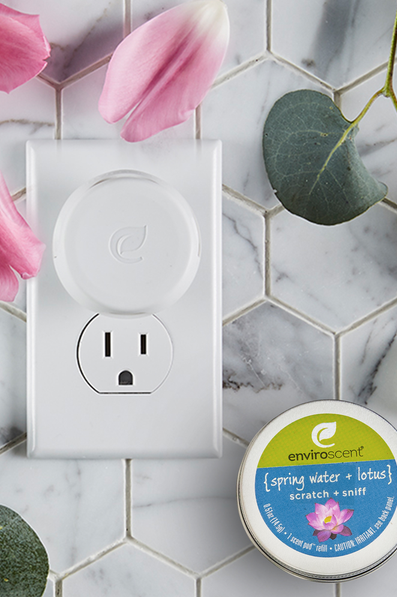
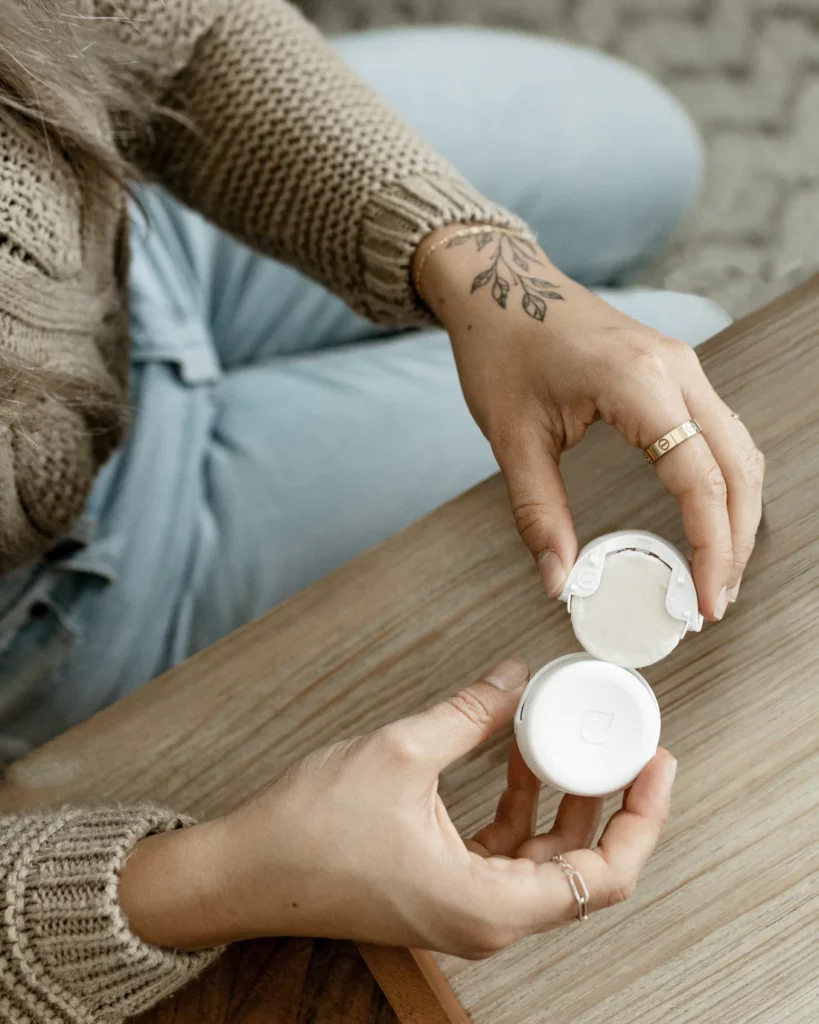
- Price Range: Plug Hub™ Starter Kit – $14; Refills are $8; Save by signing up for a subscription.
- Customizable Scent Strength? No
Putting non-toxic ingredients to work, Enviroscent sells “Plug Hubs” and accompanying “scent pods” in aromatic combos like Lemon Leaf + Thyme, Sea Salt + Aloe, and more. They use ingredients like natural fragrance oils and maltodextrin, an ingredient found in corn that helps release the scent.
Their scent refills come with a little pad that you just slip into the plug-in holder. Even though you can’t customize the scent strength, you can see the strength of each different scent (from one to five) on the product page before purchasing.
Since they’re all made from natural oils, these scents tend to be less overpowering than some of the other options.
In addition to transparent labels, Enviroscent also has a long “never list,” which includes things like formaldehyde, phthalates, and more. They’re Leaping Bunny Certified to be cruelty-free as well! In addition to their plug-ins, they also offer scent diffuser stix and car air fresheners.
4. Airomé
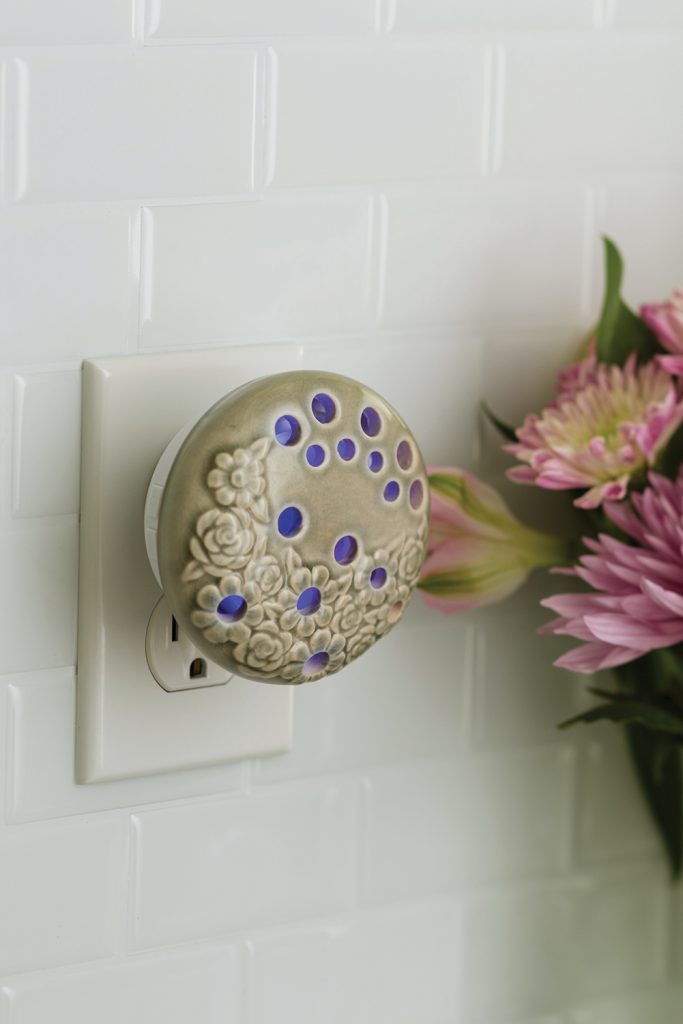
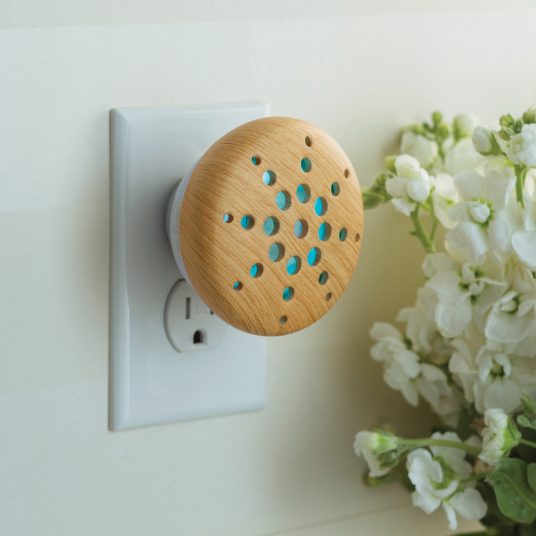
Price Range: Pluggable diffusers are $14.99
Customizable Scent Strength? Yes
If you prefer your air fresheners to act as bonus décor touches in your home, look to Airomé, which purveys plug-in essential oil diffusers that feature decorative accents.
Floral detailing? A sea-green succulent? A cute plug-in owl? They’ve got them all! With their LED lights, they can also double as a night light!
These plug-in diffusers release the essential oils of your choice. The way you can customize the scent strength is by simply choosing how many drops of oil you put onto the pad (which goes into the pluggable diffuser).
Since you apply the scents yourself, it’s very customizable both in terms of scents and strength.
Airomé also offers a lot of other diffusers as well, including your standard countertop diffusers, kids’ options, and car diffusers.
5. Aura Cacia
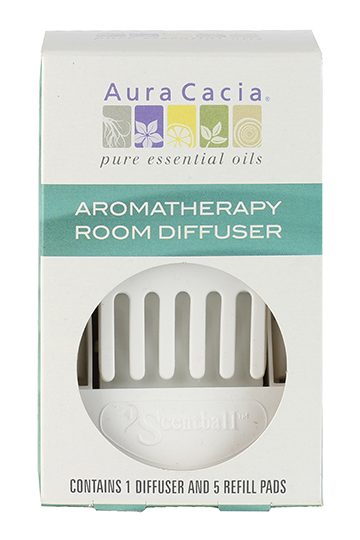
- Price Range: $14.99
- Customizable Scent Strength? Yes
With their aromatherapy room diffuser that utilizes refill pads, the essential oils brand provides a way to enjoy their scents round-the-clock. It’s an easy way to create your own plug-in with your favorite essential oil.
Like Aromé, you can customize the strength by simply choosing how many drops of oil you put on the refill pad.
5 More Non-Toxic Alternatives to Plug-In Air Fresheners
If you want to go with a plug-in alternative, here are some more great options for keeping your air fresh without harsh chemicals:
1. Grow Fragrance Scented Spray
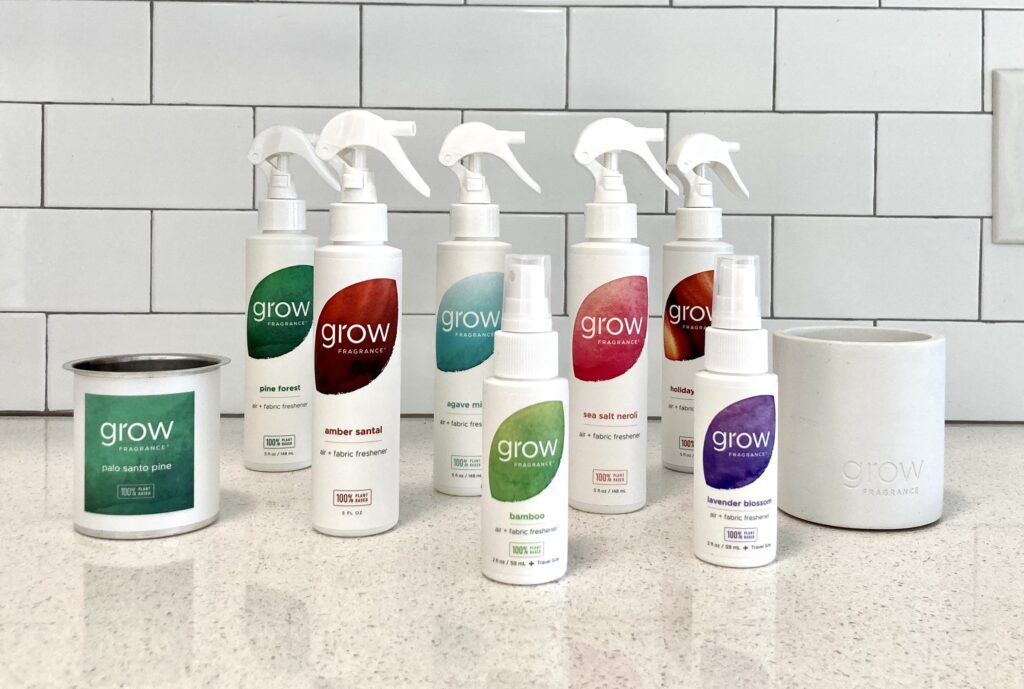
A great alternative to Febreze, these plant-based air and fabric fresheners can be spritzed around your home or in your car, and they don’t carry those chemicals derived from petroleum.
Freshen up the air and your fabrics and feel better knowing that this company provides ingredient transparency, ranging from plant-based oils to hexenyl acetate, found in green tea, to alcohol that’s been naturally fermented from grains.
Choose from scents like Lavender Blossom, Citrus Cedar, Bamboo, and more. They release limited edition scents each season, too!
And for more of my favorite non-toxic air freshener spray brands and organic room sprays, check out this article.
2. Non-Toxic Candles
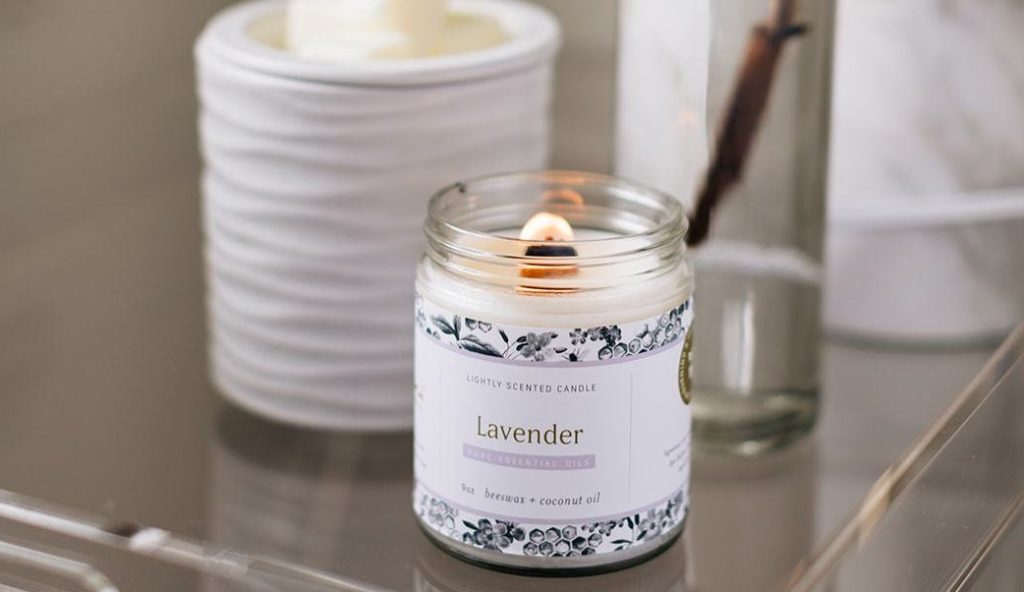
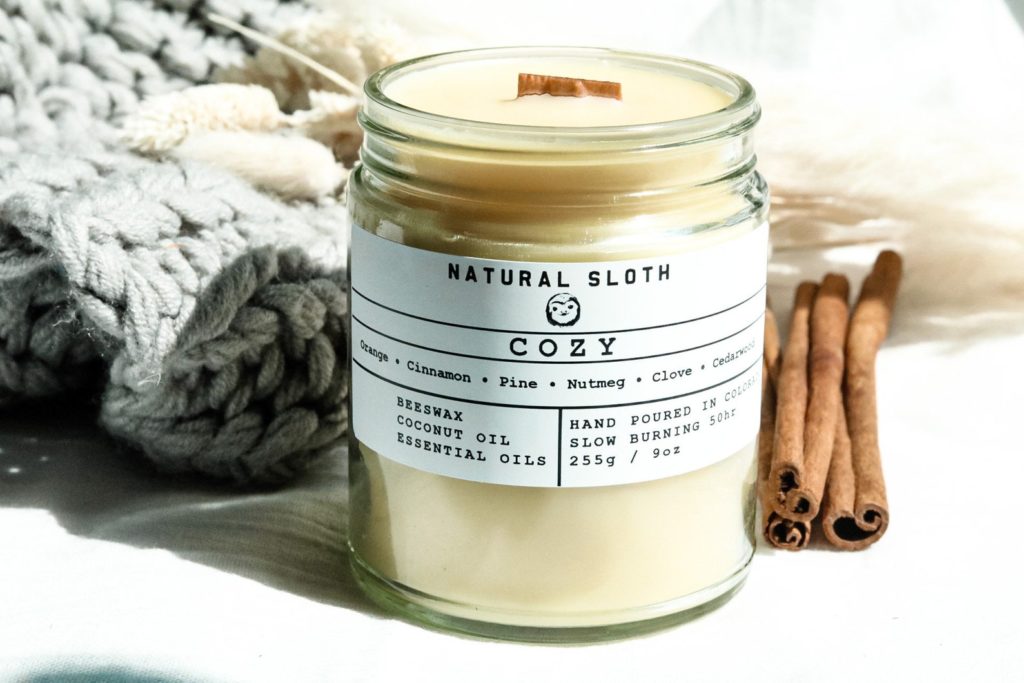
There are no shortage of non-toxic candles on the market these days! Whether you’re looking for a pumpkin-scented candle for fall, a cozy winter candle for the holiday season, or a citronella candle to ward off the mosquitos during the summer months, there’s a non-toxic version for you out there. Made with safe scents and eco-friendly waxes like soy, coconut, beeswax, and even tallow, a candle can be a great alternative to plug-ins.
3. Force of Nature Odor Eliminating Spray
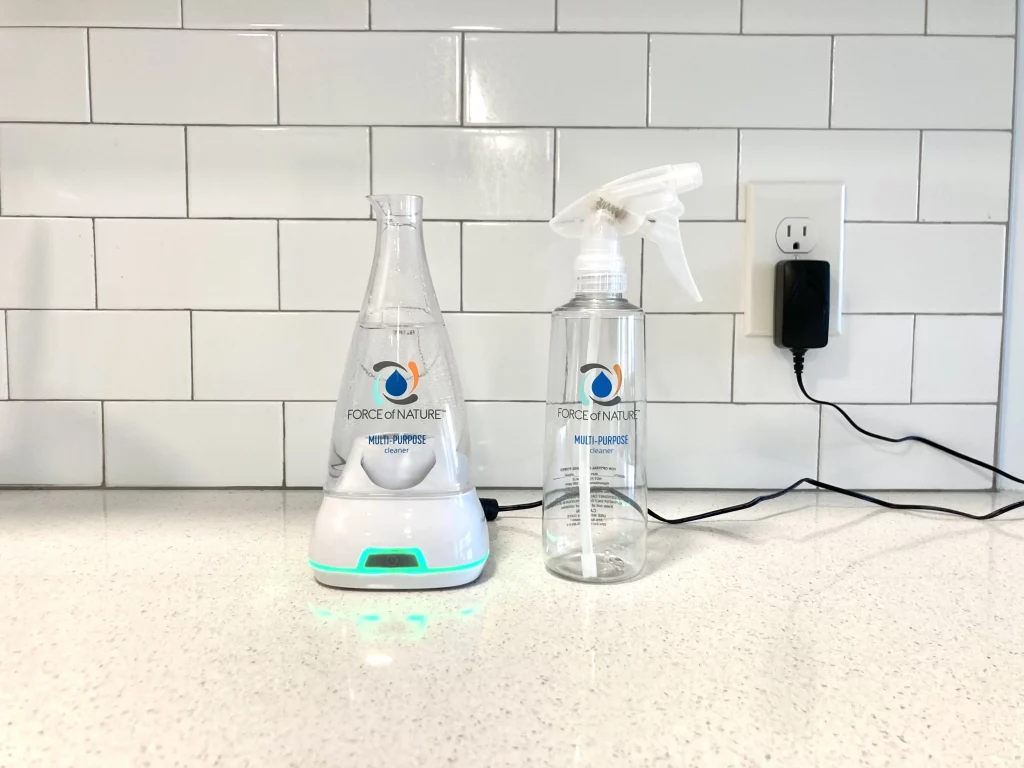
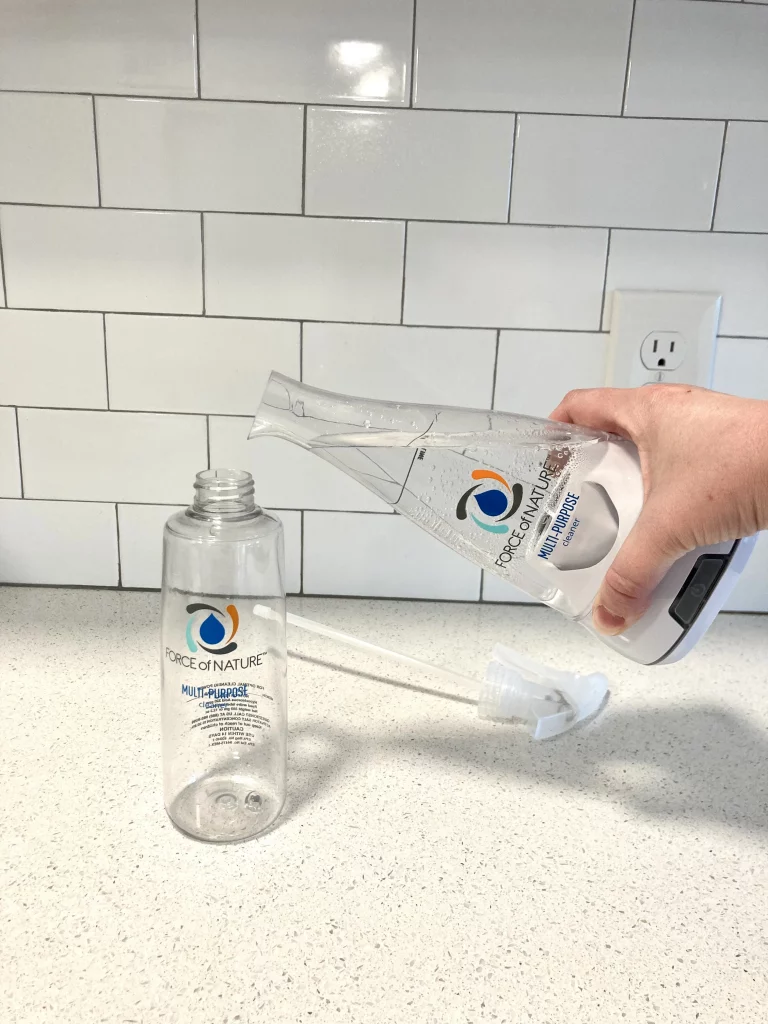
If you want a spray that will actually work to eliminate bad odors (instead of just covering them up), then you may want to check out Force of Nature.
Yes, it is an all-purpose cleaner and disinfectant, but it can also be sprayed on carpets, fabrics, and other surfaces that can’t be rinsed off in order to neutralize odors.
You can check out my full review of Force of Nature right here, or click here to shop. (And you can use the code THEFILTERY30 for 30% off your own Starter Kit or bundle.)
4. Attitude Powdered Air Purifier
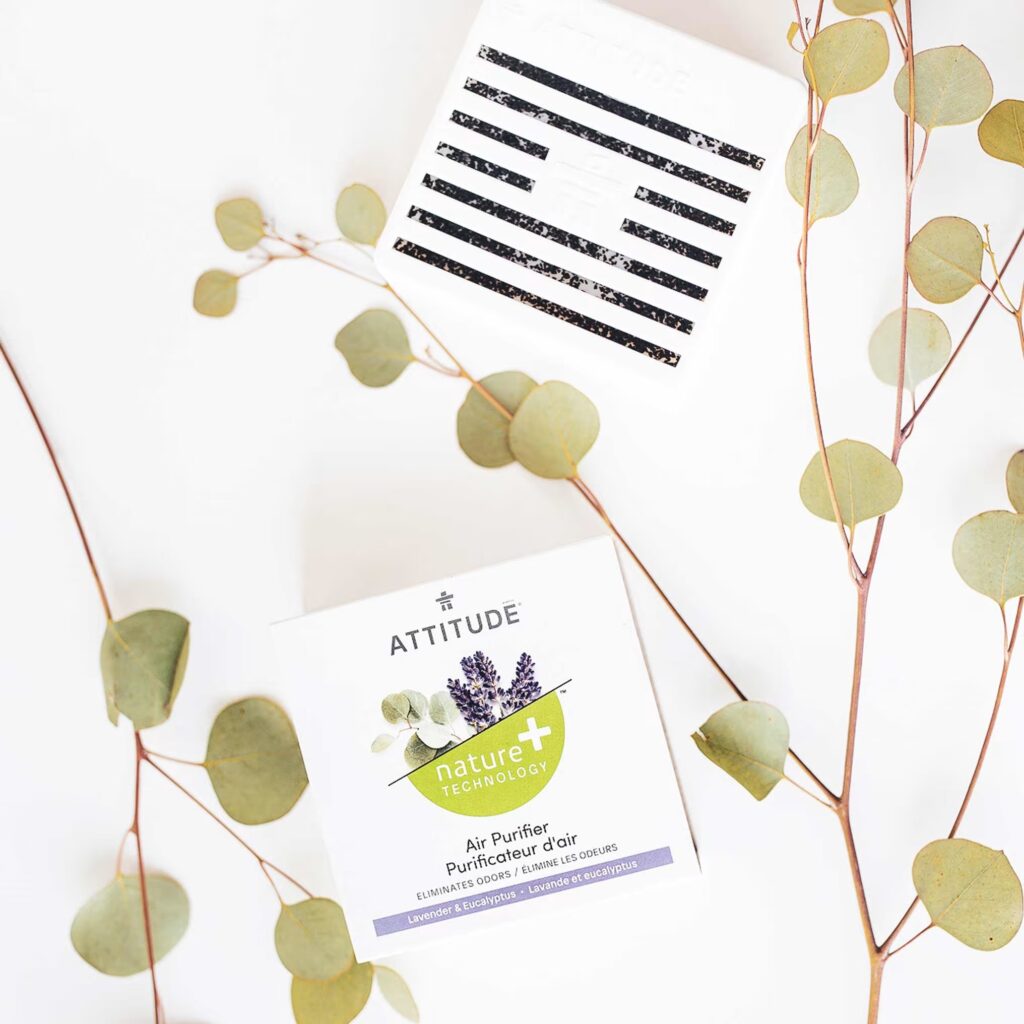
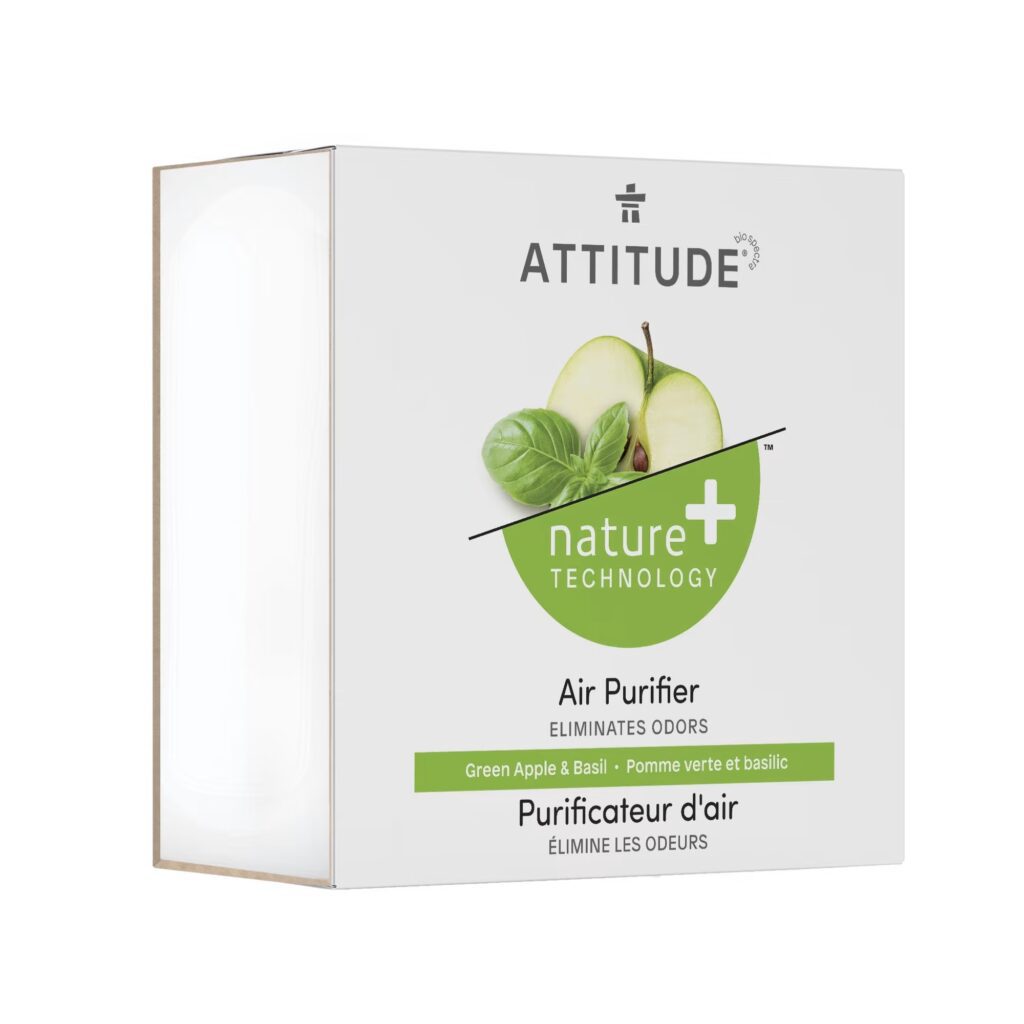
ATTITUDE’s powdered air purifiers actually work to absorb unpleasant odors from the air using activated carbon, while also releasing light scents from plant-derived fragrance.
Options include Green Apple + Basil, Passion Fruit, Coriander + Olive, Pink Grapefruit, or Lavender + Eucalyptus.
Just open up the box, set it on the counter (or whatever surface needs a refresh!), and let it passively work its magic. You can adjust the level of scent that’s released using the little lever on the top.
ATTITUDE’s products are EWG Verified, vegan, and free from any harmful chemicals like phthalates, formaldehyde, etc.
5. High-Quality Air Filter
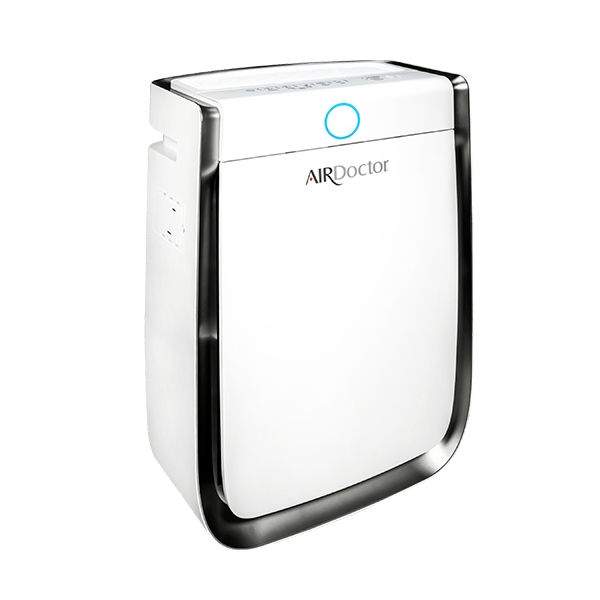

The last option for getting rid of smells and improving overall indoor air quality is to use a high-quality air filter. These are going to be a higher investment compared to a simple plug-in air freshener, but they can make a huge difference in the health of everyone living in the home.
A high-quality air filter will help you deal with mold spores, smoke, off-gassing from furniture, and other contaminants that end up in your home. And of course, an air filter will pose none of the health hazards that fragranced products can.
Two of the best brands to check out are AirDoctor (quieter, more compact, and more affordable) and Austin Air (larger, louder, and more expensive, but also more powerful).
(Also, opening your windows and bringing some fresh air into your home can make a big difference, too!)
It’s true—your home really can still smell fantastic without using toxic plug-ins! Through essential oils or purchasing natural scent blends, you can diffuse safer alternatives and non-toxic scents into the air instead of chemicals that have the power to potentially harm you, your family, and even your furry friends.
To get more tips, news, and other exclusive content delivered to your inbox once a week, sign up for Filtered Friday.




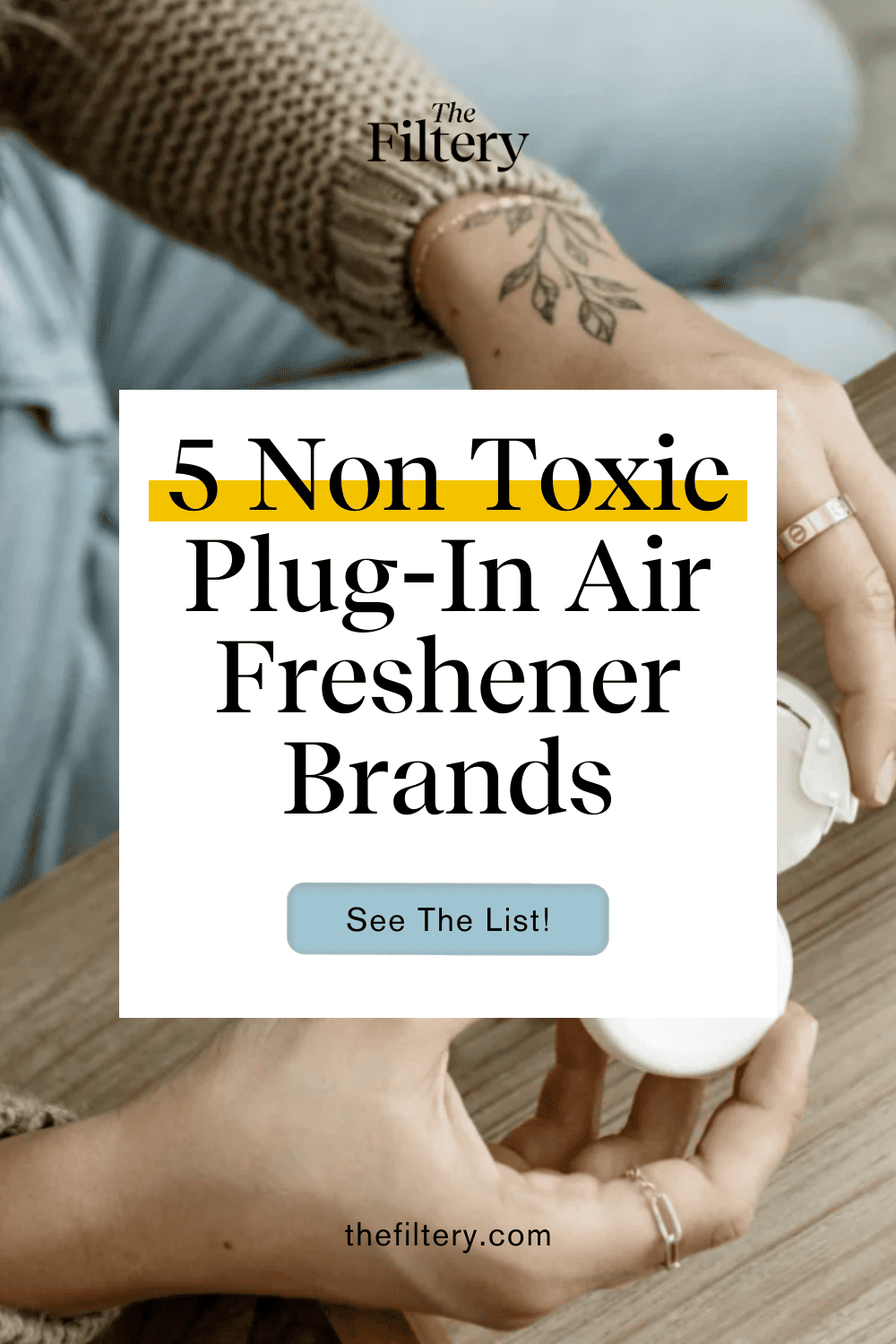
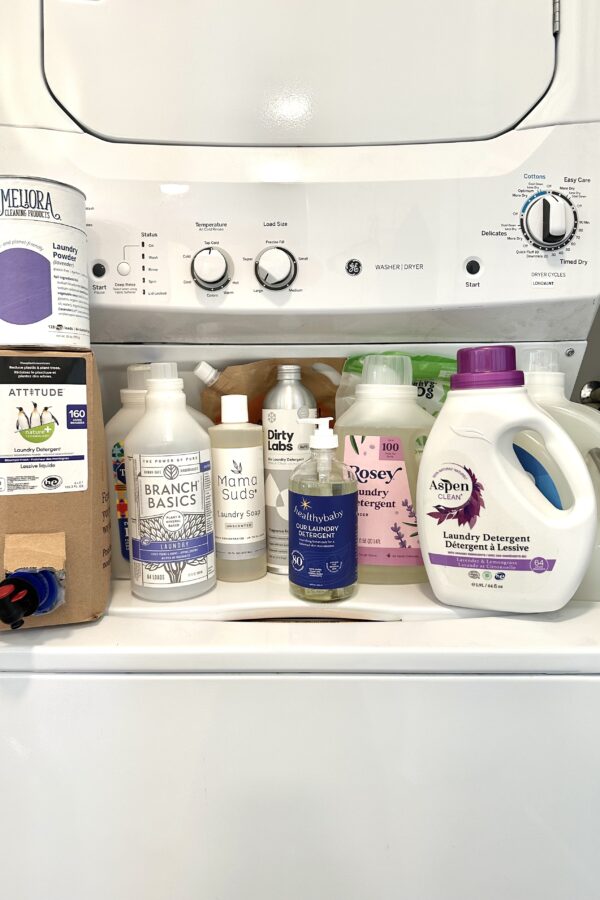

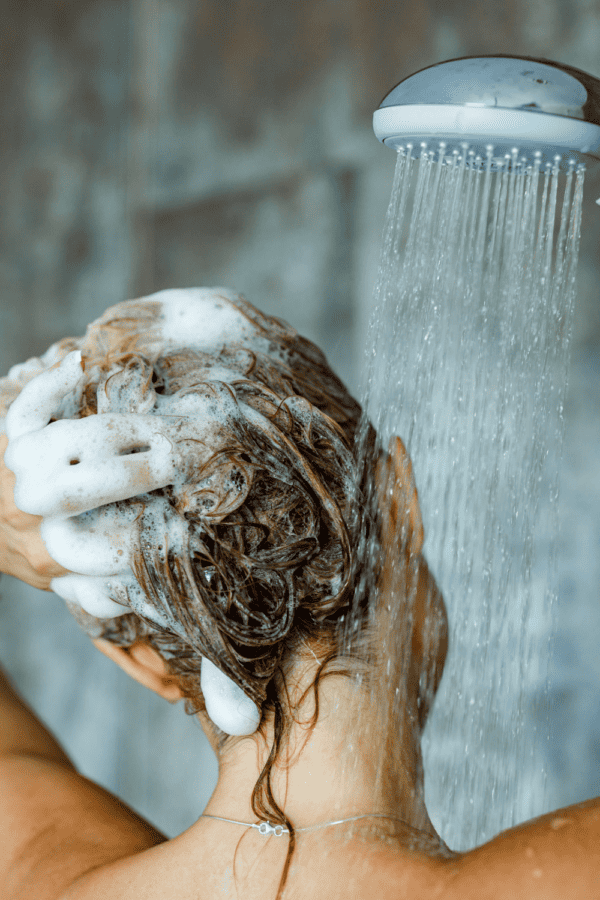
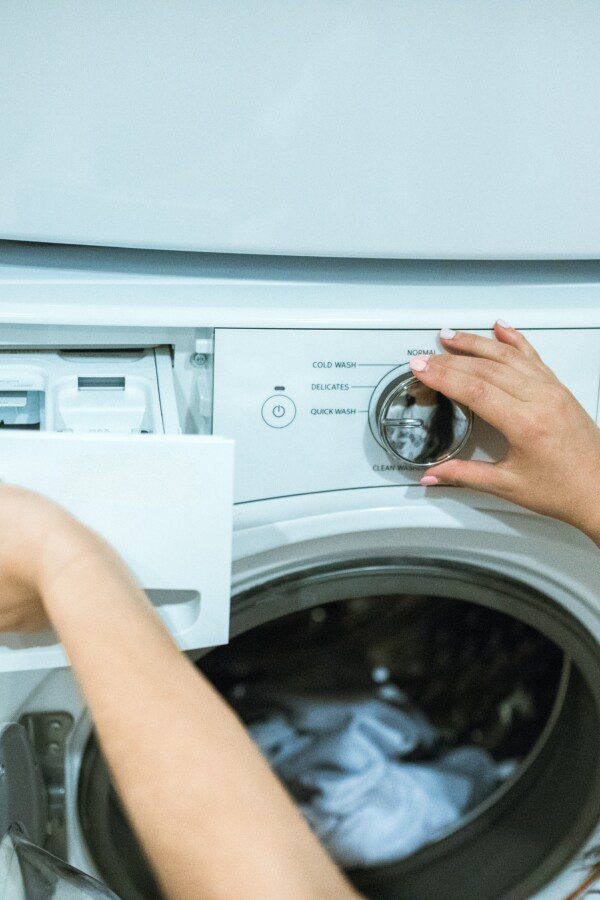
Thank you, Shelby, for guiding us towards safe and eco-friendly air freshener options. You’ve made the choice so much easier.
Hi, loved this article, so helpful! Lately, I see “hotel collection” popping up everywhere and they claim to be pet and kid safe. While they will send their ingredients that are 100% essential oil, I can’t help but think it can’t be safe! (Bath and Body says essential oil and we all know they aren’t safe!) wondering if you have done any research l. Hotel collection ?
Hey Andrea,
I hadn’t checked out Hotel Collection yet, but I just did and unfortunately, I can’t recommend them at this time. As far as I can see, they are NOT using 100% essential oils, but are using standard fragrance oils. They do not list their fragrance ingredients anywhere, and although they say they’re free from CERTAIN toxicants (such as parabens and formaldehyde), they do not explicitly say they are phthalate-free. Phthalates are one of the most concerning ingredients that can hide under the “fragrance” umbrella, so I would steer clear of this brand for now.
Hello! Thank you so much for this. What are your thoughts on Aroma360? They claim to be safe but so does everyone else.
Hi Christi,
After checking out their website, I would put Aroma360 in the “better, but still not great” category. They say their formulations are “free of phthalates, benzene, formaldehyde, toluene and other common carcinogens”, which is a good sign. But they still aren’t transparent about WHAT ingredients they actually DO use, which is unfortunate.
Hi thanks for this list! What websites or brands of nontoxic candles would you recommend? I’m looking for vanilla or marshmallow scent specifically. I get nauseous with most generic ones!
Hi there! We actually have several different candle guides, which I’ve linked to below. The marshmallow scent might be difficult to find, to be honest, but there are several brands offering vanilla and other warm scents. 🙂
https://thefiltery.com/best-non-toxic-soy-candles/
https://thefiltery.com/best-non-toxic-beeswax-candles/
https://thefiltery.com/best-non-toxic-coconut-wax-candles/
https://thefiltery.com/non-toxic-tallow-candles/
https://thefiltery.com/natural-organic-non-toxic-candles/
https://thefiltery.com/natural-non-toxic-fall-candles/
https://thefiltery.com/non-toxic-holiday-winter-christmas-candles/
iam currently staying with a friend and her sister works at yankee candle. she was given, by the sister, some yankee candle plug ins and i was wondering if they are safe. my friend says yes, but i have read that most of any plug ins can be harmful. one of the plug ins is lemon, the other is cotton, (i think that’s what she said they were)
Hi Francine,
In general, we don’t recommend Yankee’s plug-ins because they either don’t disclose all of the fragrance ingredients or the ingredients they do list include some questionable ones. You can read more here if you’re interested: https://thefiltery.com/are-yankee-candles-toxic-or-safe/
Hi Shelby,
I’m trying to go nontoxic in a toxic world. I’ve done my research or at least tried to. I’ve bought organic essential oil for a diffuser, but come to find out they can be toxic to my pup and myself. I need help if you would please.
Hi Cecilia,
Yes, you’ll want to make sure you’re diffusing pet-safe oils! You might find this article helpful, but of course you can always check with your vet to make sure just in case. 🙂
Hi!! Do you have recommendations on cat safe plugins/diffusers/candles? Reading so many stories about respiratory ailments with kitties and we have 6! Thank you!
Hey Jessica! A lot of the brands listed here are formulated using ratios that are pet-safe. (For example, Grow Fragrance says that they consulted with a vet to make sure their products are safe to use around pets, but that they should not be sprayed directly ON pets. https://growfragrance.zendesk.com/hc/en-us/articles/360041227952-Are-your-products-safe-to-use-around-pets-) That said, I would definitely check with your vet, especially if any of your cats have any special needs. Some types of essential oils are dangerous for cats (https://happytailservet.com/blog/10-essential-oils-that-are-dangerous-to-your-cat/), but it does depend on the concentration and the ingestion method (like inhaling vs eating).
Thanks for the information! What do you think about the PURA diffusers? https://www.trypura.com/?gc_id=1650507019&h_ad_id=358120948263&gclid=Cj0KCQjw1tGUBhDXARIsAIJx01mj-bcRjyJokKZwGBFMpx1X1onbPoI9McAX90HRDITdYRYaQIrUHBgaAk4zEALw_wcB
From an initial look, Pura looks like an “okay” brand… They do provide SOME ingredient transparency for their fragrances and it looks like they leave some of the worst ingredients out of their formulations. However, without a full list of fragrance ingredients, we’re still left with some questions. We might take a deeper dive into this brand later on! Thanks for the suggestion. 🙂
Wow, great information!
I thought my dogs would enjoy coming home to a smell good home as much as I do! Who knew?! Toxic air fresheners should be banned!!!!! The marketing verbiage scams should be illegal also! I will be switching all my air wicks out. My poor babies I had no idea. Thank you for educating everyone and then guiding readers to the correct products. Awesome!